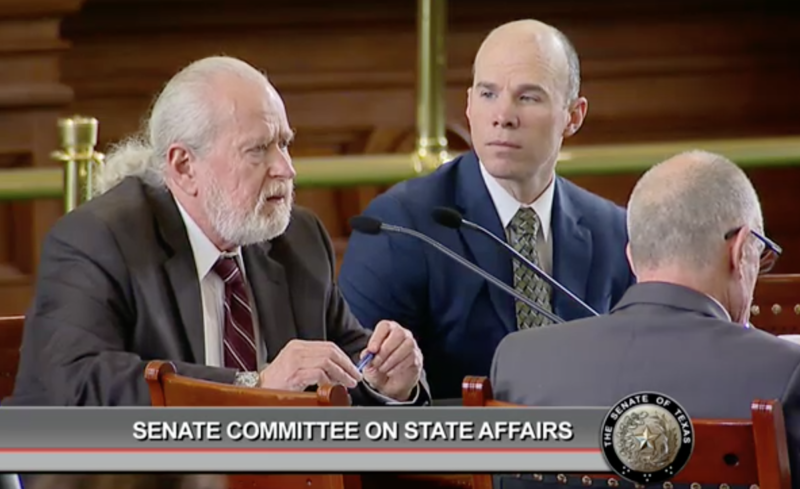The Texas judiciary has launched an online database that gives the public access to lists of protective orders issued by Texas courts as a result of domestic violence.
The database strips out certain details to protect victims’ privacy, while still alerting the public to the identify of abusers.
“The Texas Protective Order Registry fills in an information gap that existed between the courts, law enforcement and the public,” said state Representative Brooks Landgraf (Odessa), who sponsored the 2019 bill that created the registry, SB 325.
Known as “Monica’s Law,” SB 325 was named in honor of Monica Deming, an Odessa mother who was murdered by an abusive ex-boyfriend in 2015. He was able to hide his violent past from Deming, who had no knowledge of the two protective orders filed against him.
“Now, repeat offenders of domestic abuse won’t be able to hide their crimes by moving from county to county, because every court and law enforcement agency in the state will have access to a complete database of all protective orders,” Landgraf said in a press release.
According to the lawmaker, court clerks across Texas have already entered more than 1,800 protective orders into the registry.
The database is maintained by the Office of Court Administration, which also provides training for courts and law enforcement on how to use the system. The Legislature funded the creation of the registry through a $350,000 rider to the general appropriations bill.
Victim Protections and Exceptions
The statewide registry only provides the public with limited information about protective orders, and only when the protected person has authorized public access. A protected person must complete a form that authorizes public access to information about her abuser.
Victims’ advocate groups requested that provision, according to Senator Joan Huffman, who authored the bill. She said at a Senate State Affairs hearing in 2019, “There was just some concern from the victims that they — in smaller jurisdictions and so forth — they were just worried about that showing up publicly. That that may cause more harm than good.”
Law enforcement and prosecutors, however, will still have access to scanned images of both protective order applications and the orders themselves, regardless of victim consent.
The registry won’t include protective orders relating to stalking, sexual assault, or human trafficking, according to the text of the law. It includes only protective orders issued in connection with family violence.
However, the database doesn’t give public access to temporary ex parte orders pertaining to family violence, which may direct a respondent to do or refrain from doing specified acts.
Certain orders also may be missing if a court has ordered case information sealed. Finally, the registry isn’t retroactive, so it only includes orders issued from September 1, 2020.
Father’s Testimony
When “Monica’s Law” was being deliberated in the legislature, John Nielsen, the father of Monica Deming, testified in favor of the bill. He recounted the story of his daughter, who was a single mother of a seven-year-old son, and a mortgage office.
“She had a brief relationship with a man by the name of Brandon Leva. When she discovered that this man wasn’t all she had hoped for, she ended the relationship. Unfortunately that wasn’t the end for Mr. Leva.”
“He began a vicious cycle of abuse, stalking, that went on for six weeks,” the father said. “There was vandalism, threats. Everything he could do to hurt her on social media he did.”
Nielsen, who was a retired police detective, noted that his daughter came to him about the abuse. “We tried to do a little background (research) to find out who this guy was. And we found nothing. He was a blank sheet of paper.”
“Then one night on November 9, 2015, he broke into her house and shot and killed her.”
Information about Leva’s past came out during media coverage after the killing, including multiple protective orders in other counties. “It appeared that every time he got in trouble in a county he would just move,” said Nielsen.
“This went on for at least 12 years. Some (women) sought protective orders, some didn’t.”
Nielsen added that he had worked in criminal intelligence for many years for the Odessa Police and that such a registry would be of great value to officers responding to family violence calls.
Texas’ Office of Court Administration originally planned to have the registry up and running by June 1, but the Texas Supreme Court issued an order delaying that until September 1, owing to the COVID-19 pandemic.
The high court also pushed back a reporting mandate for court clerks until October 15, 2020.
